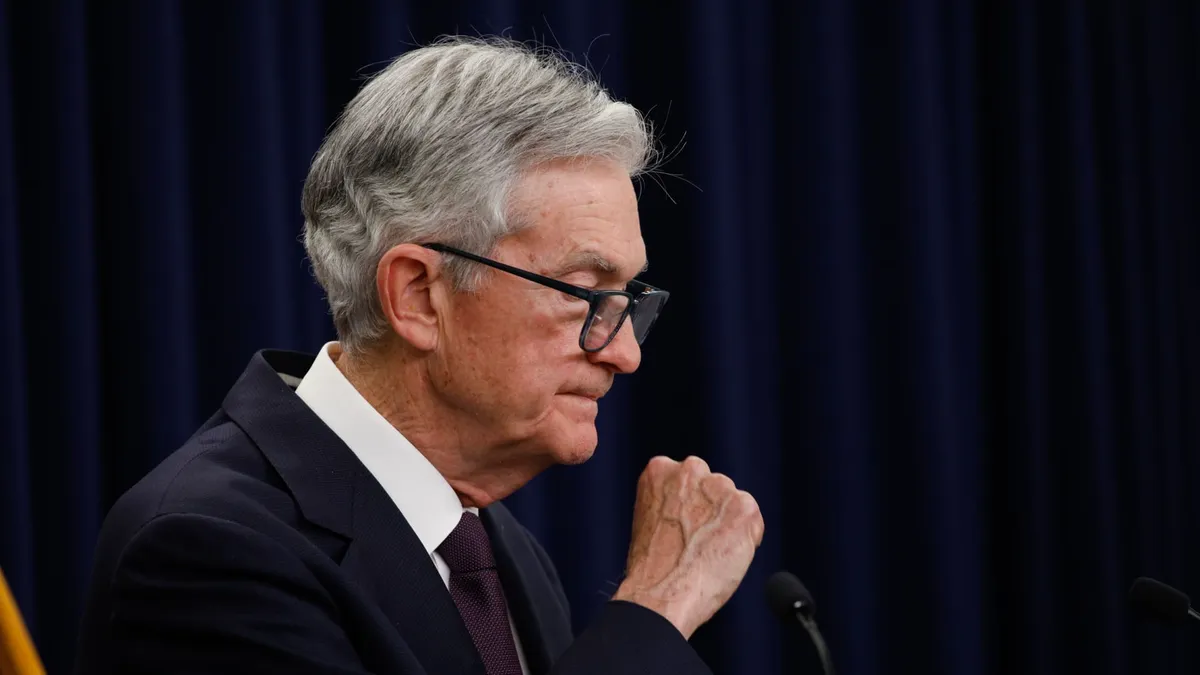
During the recent post-meeting press conference held by U.S. Federal Reserve Chair Jerome Powell, the issue of tariffs and their significant impact on prices emerged as a key topic of discussion. Powell indicated that many experts predict a substantial increase in inflation in the upcoming months due to tariffs, stating, "Everyone that I know is forecasting a meaningful increase in inflation in coming months from tariffs because someone has to pay for the tariffs." He emphasized that a portion of this financial burden will inevitably fall on the end consumer.
Despite these concerns, recent economic data has been largely positive, suggesting that the U.S. economy has managed to weather the storm of tariffs relatively well. In May, the economy added a better-than-expected 139,000 jobs, keeping the unemployment rate steady at 4.2%. Furthermore, a University of Michigan survey noted that consumer sentiment in early June surpassed initial forecasts, indicating a more optimistic outlook among consumers.
Crucially, inflation measured by the consumer price index in May rose only 0.1%, which was lower than anticipated. However, Powell cautioned that this positive trend may be temporary, attributing it to the gradual manner in which tariffs filter through the economy. He explained that goods currently on retail shelves may have been imported months before the tariffs were enacted, and as such, their effects are just beginning to surface. Powell remarked, "So we're beginning to see some effects, and we do expect to see more of them over the coming months."
While Federal Reserve officials currently do not observe signs of a weakening economy, Powell acknowledged that growth is likely to decelerate eventually. This raises concerns about the potential onset of stagflation — a troubling combination of rising prices and slowing economic growth — in the near future. The phrase "I Got Stagflation on My Mind" could become a recurring theme for both the Fed and market analysts this summer, reflecting growing economic anxieties.
On Wednesday, the U.S. Federal Reserve maintained interest rates within a range of 4.25%-4.5%, a level unchanged since December. The committee's dot plot indicated that two rate cuts are still under consideration by the end of 2025. Earlier that day, former President Donald Trump criticized the Fed, insisting that the federal funds rate should be at least two percentage points lower.
In an updated forecast, the Federal Reserve anticipates that inflation, as measured by the personal consumption expenditures price index, will exceed 3% by 2025, a notable increase from their previous prediction of 2.8%. In April, the PCE was recorded at just 2.1%. Additionally, the Fed has revised its economic growth estimate for this year down to 1.4%, down from an earlier projection of 1.7%. These revised forecasts raise early alarms about potential stagflation.
On the market front, U.S. stocks remained relatively flat on Wednesday. The S&P 500 dipped by 0.03%, while the Dow Jones Industrial Average fell by 0.1%. Conversely, the Nasdaq Composite managed a slight increase of 0.13%. Oil prices also remained stable amidst the ongoing economic uncertainty. In Europe, the regional Stoxx 600 index declined by 0.36%, although the FTSE 100 saw a minor rise of 0.11%, buoyed by U.K. annual inflation data that met expectations.
In geopolitical news, former President Trump convened his national security team for the second time in two days to discuss the escalating Israel-Iran conflict. He reiterated that no decision has been made regarding potential military action against Iran. Meanwhile, U.S. Ambassador to Israel, Mike Huckabee, announced that evacuation flights and cruise ship departures are being organized for American citizens wishing to leave Israel.
According to a report by JPMorgan, the recent surge in oil prices due to tensions in the Middle East may not result in a long-term price shock. However, the bank warned that a regime change in Iran following U.S. or Israeli military actions could have a profound and lasting impact on the global oil market.
As the U.S. and European Union continue to negotiate trade tariffs, time is running out to finalize an agreement. Analysts have identified several crucial sticking points that could hinder a successful resolution. The current negotiations have stalled since both parties temporarily reduced duties on each other until July 9. If a deal is not reached by then, reciprocal import tariffs of 50% on EU goods will come into effect, along with extensive countermeasures from the EU.
Trump commented on the negotiations, stating, "We're talking, but I don't feel that they're offering a fair deal yet," casting further doubt on the likelihood of an imminent agreement between the two economic powerhouses, which had a trade relationship valued at 1.68 trillion euros (approximately $1.93 trillion) in 2024.